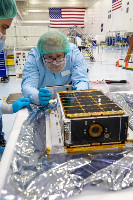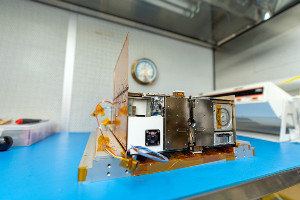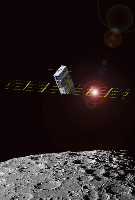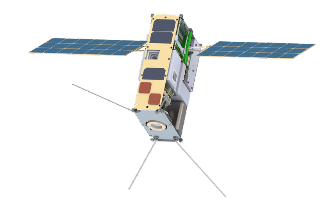| Satellite name | Lunar IceCube (Lunar Ice Cube Orbiter) |
|---|---|
| Type | CubeSat |
| Units or mass | 6U |
| Status | Was operational until 2022-11-16, 1 hour? (Contact made as reported by NASA on Twitter on 2022-11-17 but orbit needs confirmation as of 2022-12-24) |
| Launched | 2022-11-16 |
| NORAD ID | ? (Not catalogued?) |
| Deployer | CSD (Canisterized Satellite Dispenser) [Planetary Systems Corporation] |
| Launcher | SLS (Space Launch System) (Artemis-1) |
| Organisation | Morehead State University |
| Institution | University |
| Entity | Academic / Education |
| Headquarters | US |
| Partners | Busek Company, Catholic University of America (CUA), NASA Goddard Space Flight Center |
| Oneliner |
Prospect for water ice and other lunar volatiles from a low-perigee lunar orbit |
| Description |
Prospect for water ice and other lunar volatiles from a low-perigee lunar orbit flying only 100 km (62 miles) above the lunar surface. Use an innovative RF Ion engine to achieve lunar capture and the science orbit to allow the team to make systematic measurements of lunar water features. The science goals are to investigate the distribution of water and other volatiles, as a function of time of day, latitude, and regolith composition/mineralogy. |
| Results |
Carrier briefly detected (~ 1 hr) with large frequency offset, then lost. |
| Notes |
One of 13 SLS 6U Interplanetary or Lunar CubeSats |
| Sources | [1] [2] [3] [4] [5] [6] [7] [8] |
| Photo sources | [1] [2] [3] [4] [5] [6] |
| COTS subsystems |
|
| Subsystems sources | [1] [2] [3] |
| Keywords | Propulsion, Beyond Earth orbit |
| On the same launch |
Last modified: 2024-12-15





